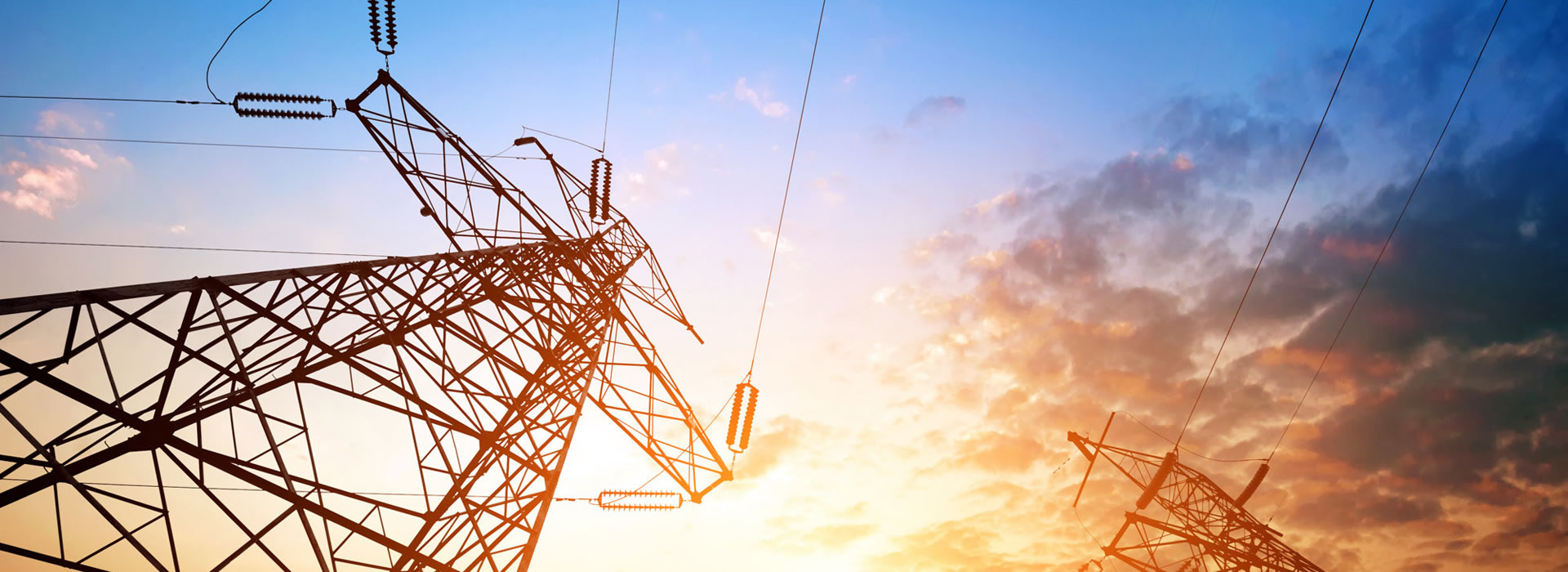China's Ultra-High Voltage: A New Flagship "Connecting" the World
【Summary Description 】 Constructing and operating the Belo Monte Ultra-High-Voltage Direct Current transmission project is like holding a golden key—further unlocking China’s UHV technology for global advancement. It offers the world a Chinese solution for large-capacity, long-distance clean energy integration. On this journey of driving global energy transformation, State Grid Corporation is steadily gaining confidence and momentum.
Nestled deep within Brazil's vast Amazon rainforest, towering steel towers rise majestically across mountains and valleys. Perched atop these structures are rows of silvery-white transmission lines, gracefully spanning the landscape. Once completed, this project will channel hydroelectric power from Brazil's northern regions directly to the country's energy-hungry southeastern hubs—bringing "bright hope" to nearly 16 million Brazilians. This is none other than Brazil’s Belo Monte Ultra-High-Voltage Transmission Project.
The Beautiful Mountain Ultra-High Voltage (UHV) Project Phase II boasts a transmission capacity of 4 million kilowatts, utilizing a ±800 kV UHV DC transmission solution. Spanning over 2,500 kilometers in total length, this project marks the first independently won UHV transmission project by State Grid Corporation of China overseas. It represents a comprehensive "going global" initiative integrating China's advanced UHV transmission technology, electrical equipment, engineering EPC services, and operational management. Moreover, it serves as a key practical example of State Grid Corporation of China’s commitment to advancing the nation’s Belt and Road Initiative and fostering international capacity cooperation strategies.
Providing a model for the global expansion of UHV technology
On the afternoon of September 1, 2017, with the joint presence of leaders from China and Brazil, Fernando, Brazil’s Minister of Mines and Energy, officially presented the construction permit for the second phase of the Belo Monte Hydropower Ultra-High-Voltage Direct Current Transmission Project to Shu Yinbiao, Chairman of State Grid Corporation of China, at the Great Hall of the People in Beijing.
More than 20 days later, on September 28—Brazilian local time—the groundbreaking ceremony for the Belo Monte Ultra-High-Voltage Transmission Project was successfully held at the construction site of the Rio Converter Station. This marks a new milestone in the power and energy cooperation between China and Brazil, paving the way for the creation of an "electricity highway" stretching from north to south.
Brazil is a vast country, with a land area exceeding 8.5 million square kilometers. Nearly 80% of the nation's electricity demand is met by large-scale hydropower plants. Moreover, Brazil's energy distribution closely mirrors China's: hydropower resources are concentrated in the northwest region, while the majority of electricity consumption is concentrated in major cities located in the southeastern part of the country. Addressing the inherent mismatch between energy generation and consumption centers has long been a key challenge for Brazil's energy sector. Fortunately, China's experience offers a viable solution—by building ultra-high-voltage transmission projects that enable the efficient "transport" of electricity from northern power hubs to southern regions.
The Belo Monte project not only addresses the mismatch between power supply and demand, resolving electricity access issues for nearly 16 million people in Brazil, but also drives upgrades across Brazil’s local power sector, electrical equipment industry, and upstream and downstream raw material chains—providing strong support for revitalizing Brazil’s economy. As a result, the project has earned both recognition and backing from the Brazilian government, while also capturing widespread attention from countries across South and Central America. It serves as a pioneering model for UHV (ultra-high voltage) technology services in the region, further cementing Chinese enterprises as a global leader with a "new calling card" on the world stage.
From "Made in China" to "China Leads"
"After the installation of these silver-colored transmission lines, we now need to focus even more on ensuring the safe and stable operation of the system," openly admitted Yu Naichun, General Manager of the Business Division and Project Leader at China Electric Equipment Corporation. "To prevent the two DC transmission lines from failing to operate compatibly after the second phase of the Belo Monte project goes live, the EPC project team—bringing together domestic R&D, design, and equipment-manufacturing expertise—made multiple trips to Brazil to engage in technical exchanges and discussions on project coordination and control strategies, ultimately finalizing a master control program. This innovative approach enabled the project, for the first time, to achieve coordinated and stable control of both transmission circuits despite sharing the same AC busbar at the sending-end converter station, significantly enhancing the system’s operational reliability and stability."
Not only that, but with State Grid Corporation of China's extensive and successful track record in domestic ultra-high-voltage projects, the project team members feel more poised and confident when tackling overseas construction initiatives. From the very start of the project, State Grid Corporation of China set a clear goal: "technologically advanced and internationally first-class." To achieve this ambitious objective, the project engineering team convened leading domestic and international design experts for an initial design review, ensuring both the quality of the project’s design and its overall construction standards. "This step has effectively minimized the technical risks associated with project implementation, making them fully manageable," said Yu Naichun. "More importantly, it marks a significant practical application of China’s achievements and expertise in UHV power construction to overseas projects."
According to the established goals, the guaranteed availability rate for the converter station of Brazil’s Belo Monte II project is set at 99.5%. But how can this ambitious target be achieved? The project team has provided a comprehensive solution: implementing multiple, coordinated measures tailored to address every aspect of the challenge. To ensure the highest standards, they’ve ensured that the design specifications for the converter transformer—including insulation, temperature rise, losses, noise levels, overload capacity, and component integration—are all stricter than those of domestically produced equipment at the same level. Moreover, key performance parameters have been rigorously tested, with results consistently surpassing the requirements outlined in the equipment’s technical specifications. At the same time, the development of the converter transformer required careful consideration of unique factors such as long-distance overseas transportation and local climatic conditions. In response, the project team intensified efforts in process optimization, quality control, and technical reviews, ensuring that all aspects—from raw material procurement and international shipping to installation and maintenance—were meticulously planned and thoroughly feasible. As Yu Naichun noted, "These strategic initiatives lay a solid foundation for achieving the project’s goal of exceptional operational availability, while also accelerating the global expansion of China’s ultra-high-voltage direct-current transmission technology and equipment." Leveraging these cutting-edge technologies and robust management practices, State Grid Corporation of China has successfully transitioned from being a “China-made innovator” to a true “global leader” in the energy sector.
Be a model for driving global green development
As a responsible Chinese enterprise, State Grid Corporation has also embraced the concept of green development throughout its project construction, striving to protect the local ecological environment and earning high praise from both local residents and the government.
Brazil's environmental protection law comprises over 20,000 articles, making it the country with the most comprehensive environmental regulations in the world. According to Anleiar, Chief Environmental Officer at State Grid Brazil Company, the environmental impact assessment (EIA) for the Belo Monte II project is widely regarded as "the strictest EIA in history." The project’s transmission lines traverse some of the planet’s most delicate ecosystems, including the Amazon rainforest—often referred to as the "lungs of the Earth"—as well as the Brazilian Highlands and the hilly regions around Rio de Janeiro. It crosses eight major river basins, encompassing 863 rivers across five major watersheds, such as the Amazon Basin and the Tocantins River. Given the region’s intricate ecological systems, varied terrain, and diverse cultural landscapes, the area boasts an exceptionally rich biodiversity. In the tropical rainforests alone, a single tree can host dozens of unique plant species. As a result, every rare or endemic species identified must be carefully "transplanted," making the scale of the environmental protection efforts truly unimaginable.
To this end, State Grid Corporation of China has adopted design solutions that exceed both local and international standards. Over the course of a year, the project team meticulously observed and documented details about the species and populations of flora and fauna in several remote forest areas deep within the region's rainforests. Additionally, they spent six months conducting comprehensive socio-economic surveys and assessments, covering aspects such as indigenous tribes, population demographics, economic conditions, education, healthcare, and transportation infrastructure along the project route.
In the end, the project team submitted both the Environmental Survey Report and the Environmental Impact Diagnostic Assessment Report, and held 11 public hearings on the environmental impact assessment. After a 25-month-long environmental evaluation process, the Belo Monte II project successfully passed Brazil’s “strictest-ever” environmental review in August 2017, earning high praise and recognition from Brazil’s electricity sector.
Constructing and operating the Beautiful Mountain Ultra-High-Voltage Direct Current Transmission Project is like wielding a golden key—further unlocking China’s UHV technology and opening its doors to the global stage. It offers the world a Chinese solution for large-capacity, long-distance clean energy integration. On this journey of driving global energy transformation, State Grid Corporation is steadily advancing with increasing confidence.
Related News




